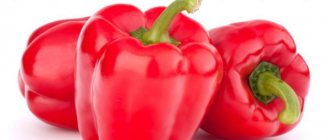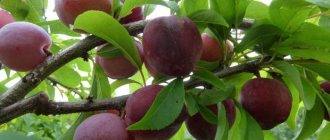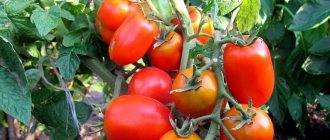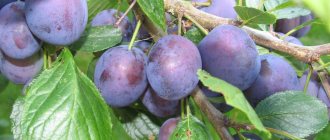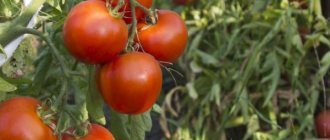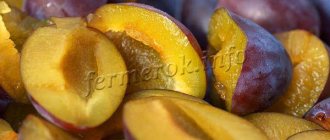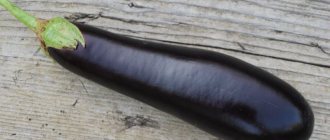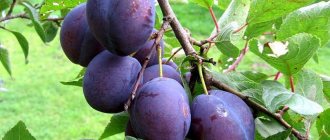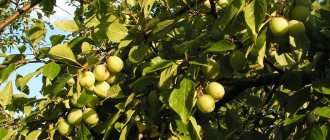Description of the plum variety Opal
Plum Opal is a low tree, reaching 2.5–3 m. The crown is compact, dense, and round in shape. The leaves are elongated, dark green.
Description of the fruits of the Opal variety:
- medium sizes;
- average weight – 30 g;
- round or oval shape;
- thin skin, when ripe, changes color from greenish-yellow to purple;
- covered with a bluish wax coating;
- the pulp is juicy, dense, yellow;
- a small elongated bone, pointed at the ends.
The fruits have a good sweet and sour taste and aroma. Tasting qualities are rated 4.5 points. The sugar content in the pulp is 11.5%. The pit is located freely and leaves about 5% of the plum mass.
The Opal plum is recommended for cultivation in the central and southern regions of the Non-Black Earth Region. The variety grows on its own roots. In regions with an unfavorable climate, it is grafted onto winter-hardy plum trees.
Rules for fruit collection and storage
The plum harvest of this variety ripens quickly, and it is advisable to remove the fruits from the tree within 7–9 days. If plums are not removed in time, they will begin to fall off the stems and rot on the ground. The skin of the fruit is thin, so it does not last long. It is best to keep the harvest in the refrigerator at a temperature of +5...+7°C - in such conditions plums can be stored for up to 2 weeks. The variety has a short shelf life, so it is better to eat the fruits right away.
Important! Do not store softened or rotten fruits - such plums
can be hazardous to health and cannot be processed .
If there is a lot of harvest, it is advisable to freeze it. You can also make preserves, jams, compotes, juices, liqueurs or wine from Opal plums. Opal plums can be grown both for harvest and as a pollinator for other varieties. Opal fruits have high taste, and the trees do not require special care, and due to this, the variety is popular among gardeners in various regions.
Characteristics of the variety
Before purchasing a plum, its main characteristics are taken into account: resistance to drought and frost, the need for planting pollinators, yield and timing of fruit ripening.
Drought resistance, frost resistance
Drought resistance is rated as average. During drought, plum trees require constant watering. In the absence of moisture, the ovaries fall off and the yield decreases.
Frost resistance of the Opal variety is below average. When the temperature drops to -30 °C, the tree freezes slightly, but quickly grows its crown. Productivity is restored after 1–2 years.
Opal plum pollinators
The Opal variety is self-fertile. Planting of pollinators is not required for the formation of ovaries.
Opal plum can be used as a pollinator for other varieties:
- Smolinka;
- Morning;
- Blue gift;
- Extra early;
- Hungarian Moscow.
Attention!
The presence of different varieties of plums on the site, blooming at the same time, has a positive effect on their productivity. The Opal plum blooms from mid to late May. The harvest ripens in early August. Fruiting is not extended over time: the fruits are harvested within a week.
Productivity and fruiting
When growing the Opal plum on cherry plum seedlings, fruiting begins in the 3rd year after planting, on zoned varieties - already in the 2nd year. An adult tree over 8 years old produces 20–25 kg of fruit.
The harvest volumes of the Opal plum are unstable. After abundant fruiting, there is a possibility that the next year will be less productive.
With a large number of fruits on the branches, they become smaller and lose their taste. Harvest rationing will help correct the situation. During the flowering period, remove excess buds.
Area of application of berries
Opal plum is used both fresh and processed. Desserts and fillings for baked goods are prepared from it. Homemade preparations are made from plums: confitures, jams, preserves, compotes.
Resistance to diseases and pests
Resistance to diseases and pests is average. In cold and rainy weather, the Opal variety is susceptible to cleasterosporia and other fungal diseases.
Advantages and disadvantages of the variety
Advantages of the Opal plum variety:
- early maturation;
- universal purpose of fruits;
- high productivity;
- unstable fruiting;
- self-fertility;
- resistance to diseases.
Disadvantages of plum Opal:
- with high yields, the fruits become smaller and lose their taste;
- low winter hardiness;
- in cold regions, grafting onto more winter-hardy varieties is required.
You can be convinced of the merits of the Opal plum by comparing it with other representatives of the species:
Advantages and disadvantages of the variety
- Among the advantages of the Opal variety are the following:
- early harvest ripening;
- high yield rates;
- self-pollinating;
- disease resistance.
- This plum also has a number of disadvantages:
- unstable yield;
- low frost resistance;
- poor tolerance to drought;
- with a large number of ovaries, the fruits grow small.
Early ripening varieties of plums also include:
Landing Features
The Opal plum tree is planted in autumn or spring, depending on the weather. Its yield depends on the correct choice of place for growing a crop.
Recommended timing
In the middle zone, plums are planted in the fall, after leaf fall. The plant manages to take root before the onset of frost.
In cold climates, it is better to postpone planting until spring. Work is carried out in the spring, before the buds open.
Choosing a suitable location
Plum loves well-lit places, protected from the wind. To ensure that the roots of the tree do not suffer from moisture, groundwater should be no higher than 1.5 m.
Advice! If you place the plum on the south or west side of the site, the tree will receive the necessary natural light.
Plum is undemanding to soil composition. The exception is acidic soil, which is detrimental to wood. The maximum yield is obtained when the crop is grown in fertile, well-drained soil.
What crops can and cannot be planted nearby?
- Plum does not tolerate the proximity of birch, poplar and hazel.
- The tree is removed from other fruit crops at a distance of 4 m or more.
- Raspberries, currants or gooseberries are planted between the rows of plums.
- Shade-loving herbs and primroses grow well under the tree.
Selection and preparation of planting material
One- or two-year-old seedlings of the Opal variety are chosen for planting. They are purchased from nurseries or other gardening centers. Seedlings are assessed visually and specimens free of mold, damage and other defects are selected.
Before planting, the roots of the Opal plum are placed in clean water for 3 hours. If you add a few drops of the Kornerost stimulant, the tree will take root faster after planting.
Landing algorithm
Planting procedure for Opal plum:
- First, prepare a pit measuring 60*60 cm and 70 cm deep.
- Fertile soil, peat and compost are mixed in equal quantities.
- In heavy clay soil, a drainage layer should be provided. A layer of crushed stone or expanded clay 10 cm thick is poured onto the bottom of the pit.
- Half of the excavated soil is placed in the hole and left to shrink.
- After 2–3 weeks, the remaining soil is poured into the hole, and a seedling is placed on top.
- The roots of the plum are covered with earth.
- The tree is watered abundantly. The tree trunk circle is mulched with peat.
Features of cultivation and subtleties of care
Like planting, caring for the Opal plum does not require the use of any special techniques or techniques. Here are just a few tips that will help you grow a healthy tree and get a good harvest:
- During dry periods, the plum tree should be watered at least once or twice a week, ensuring constant soil moisture to a depth of 25-35 cm.
- 20-30 days before the fruits ripen (approximately from the beginning of July), watering is stopped to avoid cracking of the skin.
- The most suitable crown shape is in the shape of a bowl or spindle.
- Since the variety is prone to thickening the crown, it needs to be thinned out annually in the spring by cutting off intersecting shoots and tops that grow inwards.
Since the Opal plum variety is prone to thickening of the crown, it needs to be thinned out every spring
- If an excess number of ovaries is formed, normalization should be carried out by partially removing them.
All the above tips for caring for the Opal plum variety are designed for growing in the middle zone, including in the Moscow region.
Aftercare for plums
- The Opal plum is watered 3 to 5 times during the season. The tree needs moisture during flowering and fruiting. Up to 10 buckets of water are poured under the drain.
- The watered soil is loosened so that moisture is better absorbed.
- Feeding the Opal plum begins in early spring. 30 g of urea, superphosphate and potassium salt are dissolved in water. After flowering, fertilizing is repeated, but only phosphorus and potassium fertilizers are used.
- After 3–4 years, the soil under the trees is dug up.
For 1 sq. m add 10 kg of humus or compost. Important! Proper pruning helps shape the crown of the Opal plum and increase yield. - The plum crown is formed in tiers. Be sure to remove dry, frozen shoots. Plum trees are pruned in early spring or autumn.
- In late autumn, young plantings are hilled up and covered with agrofibre, burlap or spruce branches. Additionally, a snowdrift is thrown over them.
- To prevent rodents from damaging the tree trunk, it is covered with mesh or roofing felt.
Diseases and pests, methods of control and prevention
The main diseases of plum are listed in the table:
| Disease | Symptoms | Treatment | Prevention |
| Clusterosporiasis | Brown spots on leaves, cankers on fruits. | Spraying the tree with a solution of copper oxychloride (30 g per 10 liters of water). | 1. Trimming excess shoots. 2. Digging up soil in the tree trunk circle. 3. Preventive treatment with fungicides. |
| Fruit rot | Spots with fungal spores appear on the fruits. | Processing plums with Bordeaux mixture. |
Crop pests are listed in the table:
| Pest | Signs | Struggle | Prevention |
| Garden aphids | The pest forms colonies on plum shoots, as a result the leaves curl and dry out. | Spraying plums with a solution of the drug "Karbofos". | 1. Digging up the soil under the plum tree. 2. Cleaning up fallen leaves. 3. Treatment of plums in early spring with Nitrofen. |
| Silkworm | The caterpillar feeds on buds and leaves and leaves nests made of cobwebs in the branches. | Treatment with the drug "Entobacterin", infusion of tobacco or wormwood. |
Diseases and pests: main types and solutions to the problem
Since the sources do not mention the susceptibility of the variety to pest attack, it can be assumed that this factor is not important. And since the variety is resistant to fungal diseases, it can be grown without the use of chemicals, which ensures the environmental purity of the product. To avoid possible problems in this regard, it is necessary to follow typical preventive principles for the use of plant protection products. In short, this is:
- Collection and removal of fallen leaves from the area.
Collect fallen leaves and remove them from the stubble. - In late autumn, dig or till the soil around the plants to a depth of 20-25 cm.
- Bleaching the bark of trunks and thick shoots with a solution of lime with 3% copper sulfate.
Tree trunks should be whitened in autumn with a solution of slaked lime. - Crown pruning (cutting off diseased, dry and damaged shoots).
- As a preventive measure, treatment can be carried out with harmless biological preparations, such as Fitoverm, Fitosporin, Iskra-Bio, etc. They should be used in accordance with the attached instructions.
Chemical plant protection products should only be used in the event of a specific disease infection or pest attack.
